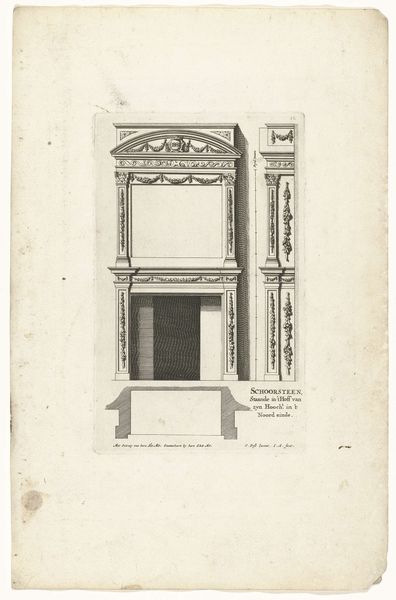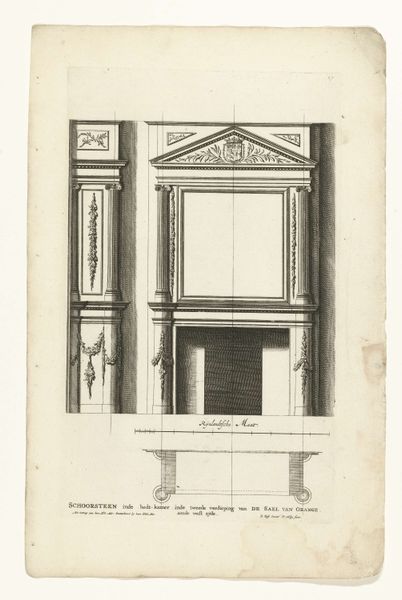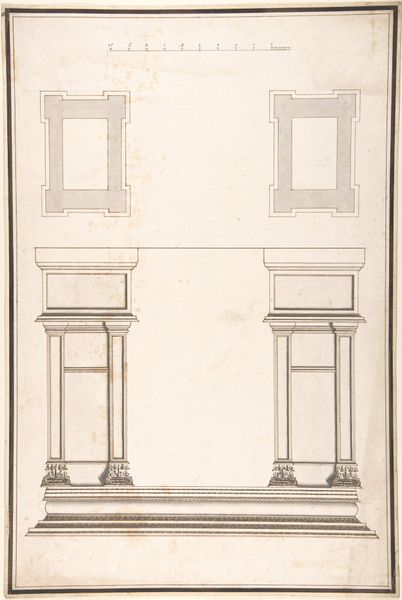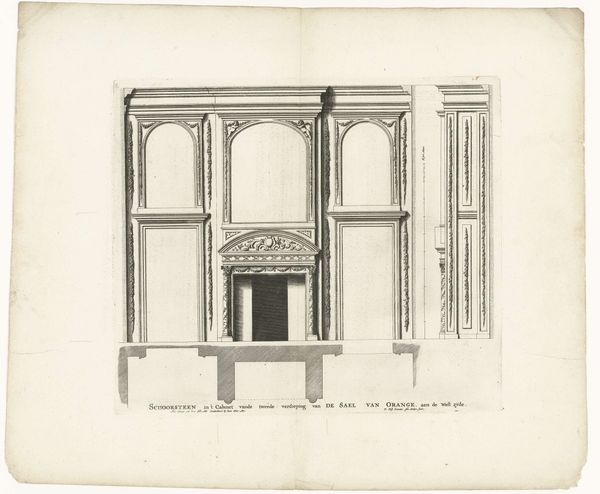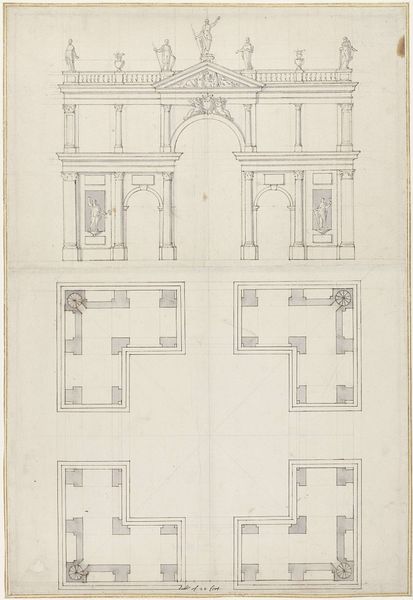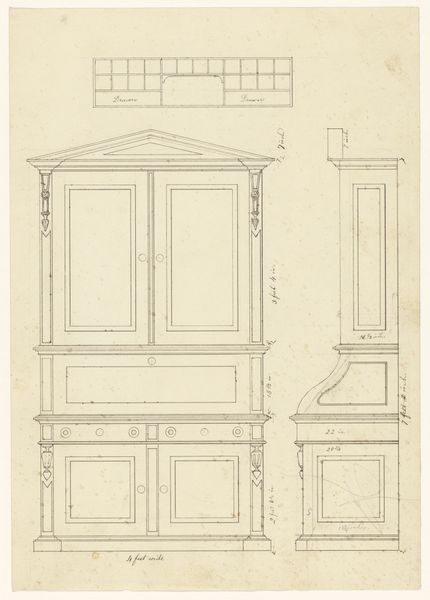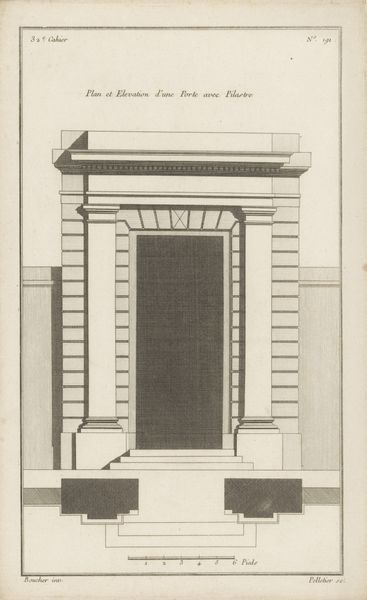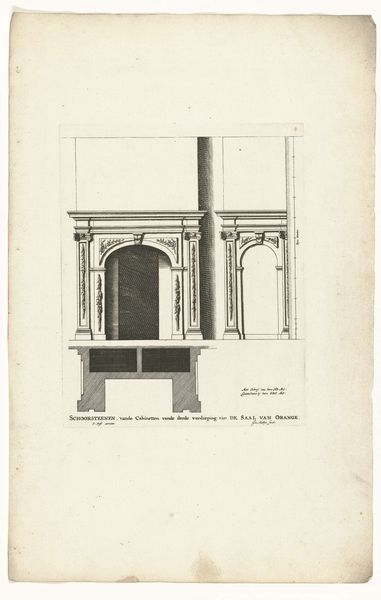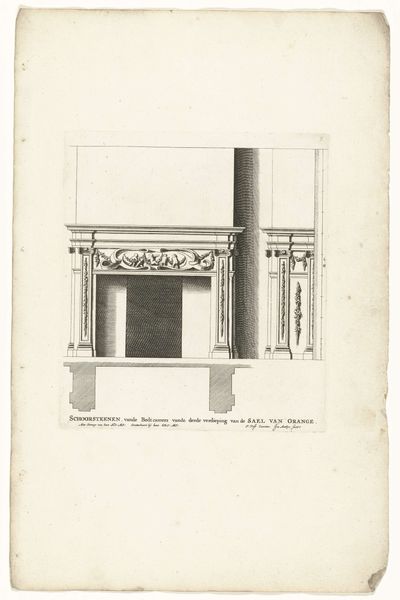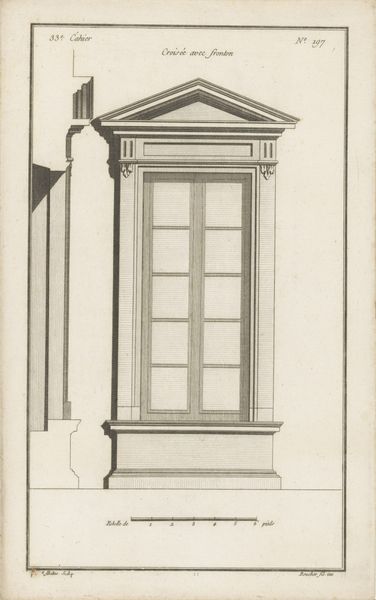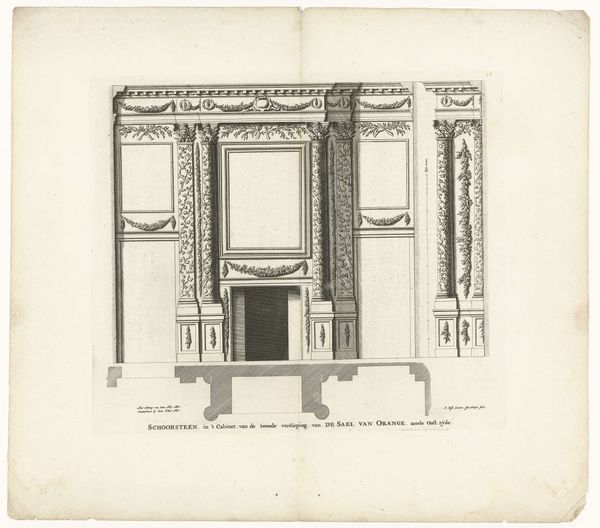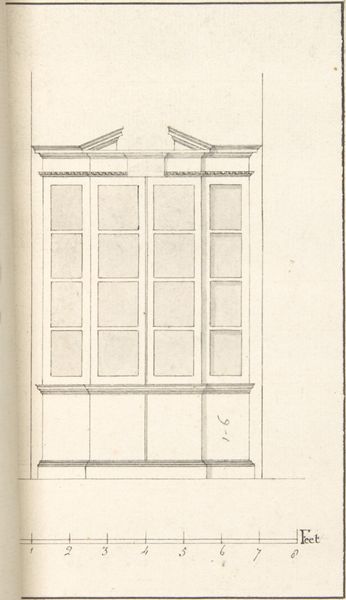
Design for a Palace Façade: detail of Windows and Doors 1720 - 1753
0:00
0:00
Dimensions: 9 7/8 x 8 7/16 in. (25.1 x 21.5 cm)
Copyright: Public Domain
Curator: Let’s turn our attention now to “Design for a Palace Façade: detail of Windows and Doors,” an ink and paper print made sometime between 1720 and 1753, by Carl Hårleman. Editor: It has an air of solemn, even severe grandeur. Like something from a very serious, very well-organized dream. You could lose yourself in all those repeating lines. Curator: Hårleman, you see, was deeply involved in the aesthetic of Neoclassicism. There's a conscious return to perceived "purity" of the arts from antiquity, which really emerges as an aesthetic and political agenda. Here the classical elements serve to symbolize permanence and order. Editor: I’m immediately struck by the faces, though. The lion heads above each window look oddly…pinched. Maybe even a little judgmental? Which feels so contrary to the otherwise flawless, almost utopian feel. Curator: That’s an astute observation. The lion motif in architectural design often represents courage, strength, and protection. In the context of Neoclassicism, though, the lion could be symbolic of civic virtue. It invites a public that, at the time, were familiar with symbolism. It implies that all inhabitants share such virtuous character, protected by equally virtuous leaders. Editor: So, it's like a visual promise then? Of strong, capable, benevolent rule. The kind that always works out, haha. Curator: Yes, absolutely! I imagine Hårleman placing these symbols, in relation to a Neoclassical structure as a deliberate articulation of an ideal order. If the era is "re-born", so to speak, he's declaring the symbols must reflect its core foundations. Editor: Fascinating! This feels like more than just a design, then, but an expression of profound aspirations for a new kind of society. Still, I think I will always see these lions as more disapproving than protective. Curator: Indeed, the dialogue between intended symbol and individual experience adds nuance. And hopefully reveals new layers of meaning. Thank you for that wonderful perspective! Editor: It’s been a pleasure. I appreciate how Neoclassicism sought a universal visual language but how unique it still manages to feel.
Comments
No comments
Be the first to comment and join the conversation on the ultimate creative platform.

